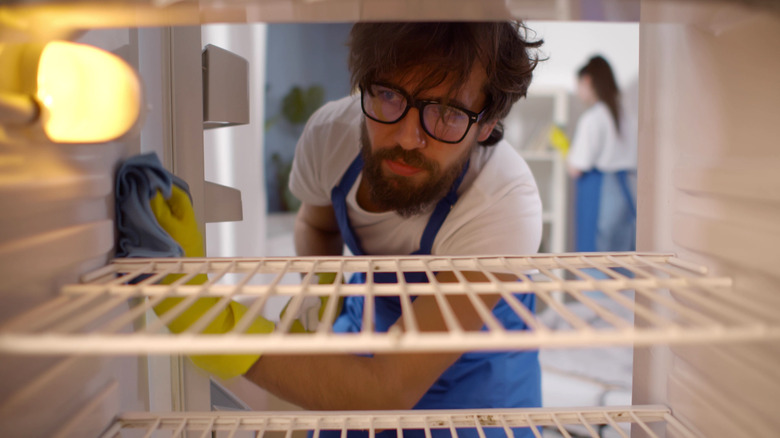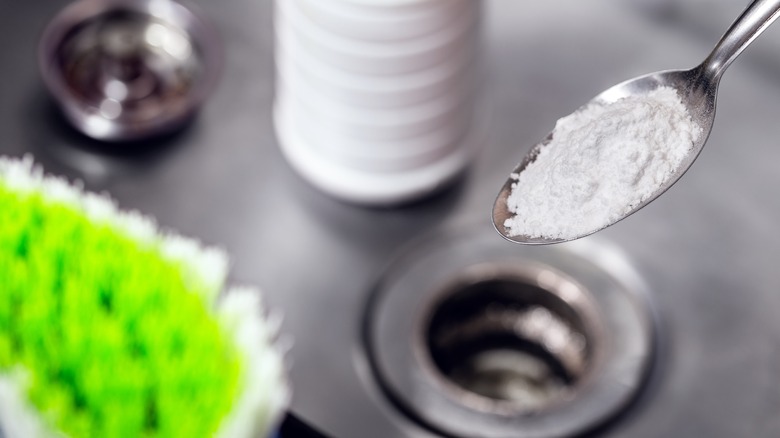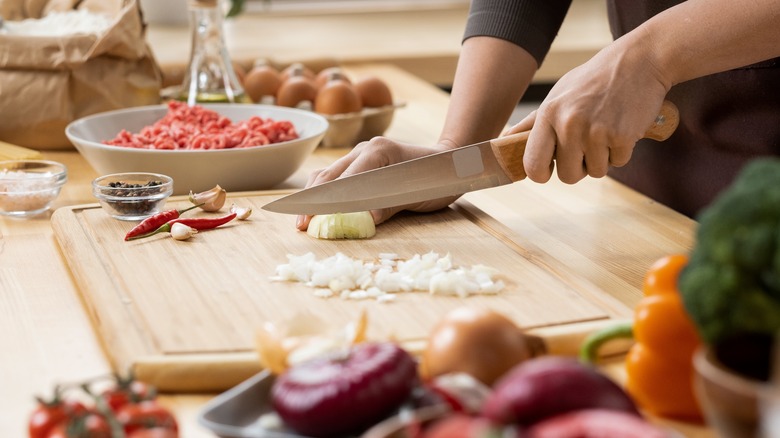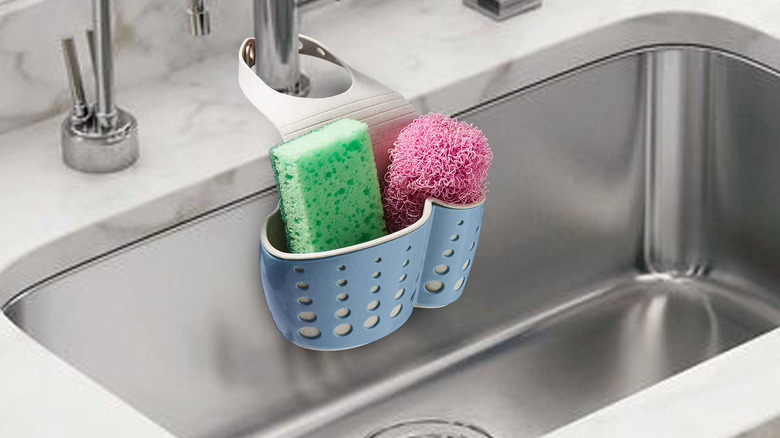4 Things In Your Kitchen You're Probably Not Cleaning Enough
Cleaning a crucial area like the kitchen is serious work that needs to be done thoroughly and effectively. When you keep the kitchen clean, you maintain good health since foodborne illnesses are kept at bay. Having a clean kitchen that feels good to be in also generates positive energy as it encourages you to maintain it properly, invite people over, and more, per FastKlean.
Doing dishes, wiping down surfaces, and surface cleaning appliances are probably the most common forms of cleaning that are carried out in the kitchen. However, there are certain areas and items that are often forgotten. Such places might be out of your regular line of sight, while such things might not show typical signs of dirt or wear. It's important to identify these so that you can include them in your regular cleaning routines and make sure your kitchen is actually clean when you do your chores. Here are four areas of your kitchen to keep in mind when you have time for a little extra effort.
Tackle the fridge (yes, regularly)
Sure, you might wipe up spills and throw out rotten food, but when was the last time you emptied your fridge and freezer and gave them a thorough scrub? Cleaning this part of the kitchen is rarely done often enough, even though it is where a lot of food is stored and a dirty fridge can easily become a ripe environment for bacteria and mold that cause all types of illnesses. Deep clean your fridge around the end of every season, says GQ. You do this by taking everything out, cleaning the interior, and putting the items back in an organized way that lets you see everything.
In addition to washing the body of the fridge, you'll want to wash and disinfect the drawers and other removable parts. Two more areas you shouldn't ignore during your deep clean are the under and back sides. Move your fridge gently so you can clean the wall and floor. In between deep cleans, Molly Maid suggests that you do regular smaller cleanings. This can look like rinsing off jars and other types of containers and keeping an open baking soda box in the fridge to tackle any odors.
Make that sink sparkle
According to a recent survey, most people prefer to have double basin sinks as they are spacious and versatile. Being able to prep food and wash dishes well are the main priorities for a kitchen sink, which means that it should be kept as clean as possible due to its role in the cooking process. However, this crucial part of the kitchen is one that doesn't get cleaned enough. You might think that the sink is fine as long as it's cleaned out and wiped down once in a while, but it is home to many germs that come from the stagnant water, food particles, and other things that come in contact with it. Think of it as similar to the way showers and baths are only for washing bodies clean but still need to be cleaned thoroughly, say The Maids.
If you have a stainless steel sink, use natural cleaners like distilled vinegar and baking soda to scrub the sink, drain, and any corners, and then rinse with hot water. Boiling water, baking soda, and lemon juice can also be poured down the drain to clean it (via The Maids).
Eliminate dangers that could be lurking in your cutting board
Cutting boards aren't usually cleaned enough, which is dangerous. They must be washed and sanitized often because of their direct contact with raw foods. Using unclean boards can lead to food poisoning due to any harmful bacteria that might have gotten onto them while preparing food. When cooking a meal that involves vegetables and meats, for example, you need to thoroughly clean the cutting board after chopping one before going on to the next.
Cutting boards should be washed with hot water after use and before another food item is prepared, says Clemson's Home and Garden Information Center. If preparing raw proteins like meat or seafood, you need to also disinfect the board with a solution like chlorine bleach and rinse it off properly. Some materials like solid wood, glass, and plastic will be dishwasher-safe. Another really helpful tip is to have different boards for different types of food (via The Academy of Nutrition and Dietetics).
Don't forget to clean your cleaning tools
Kitchen sponges are used to clean the dishes but also to clean up spills and wipe counters. Even with their different functions and heavy rate of use, they don't get cleaned or replaced as frequently as they should. One reason you're not cleaning your kitchen sponges enough is that you assume they get washed when you use them, but they actually hold on to a lot of germs and dirt.
Research has shown that kitchen sponges are highly conducive environments for different bacteria to thrive, especially due to their porosity (via Smithsonian Magazine). Some ways to clean your sponge include putting it in the dishwasher or washing machine — microwaving it so the heat kills the bacteria. Good Housekeeping suggests water immersion and then zapping it for one to two minutes (depending on its type). You can also soak it in bleach or in boiling water. These methods are very simple and accessible since they require things that you already have and use at home. You should also replace your sponge regularly, especially when it starts to smell, and store it in a caddy so that it can dry properly, advises OXO.




